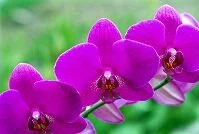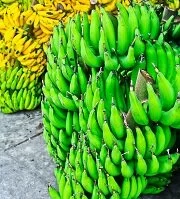Wildlife

Orchids
As an island nation the number of native plants and animals in the Federated States of Micronesia are severely limited. The land animals were almost completely absent and the plant life was small; only the migrating birds and sea life had any significant presence in historic Micronesia. Most of what is found on the islands today was introduced in pre-historic times by the migrating people, birds, winds, and ocean currents.
Since nearly all mammals are land animals there were no native mammals to the Federated States of Micronesia, although a few bat species arrived thousands of years ago. Other than this, no land mammals existed on the Federated States of Micronesia until the arrival of the earliest people, who likely came from the region of New Guinea and brought with them pigs, dogs, mice, and rats by the 1200s, if not earlier.
The other historic mammals connected with the Federated States of Micronesia are in the sea as dolphins and whales are present in the waters surrounding the islands. These waters are also filled with thousands of fish, shellfish, and other forms of sea life. In these waters you can find surgeonfish, clownfish, sailfish, puffer fish, butterfly fish, grouper, barracuda, tuna, mackerel, marlin, mahi-mahi, shrimp, krill, crab, seahorses, manta rays, sharks, jellyfish, starfish, and sea urchins among many others.
This sea life and the islands have also attracted numerous birds, including many that feed off the animals in the sea. The bird life in the Federated States of Micronesia includes doves, owls, passerines, scrub fowls, and heron among others.

Bananas
Like the mammalian life in the Federated States of Micronesia, the reptilian and amphibious life is fairly limited as well. The most common of these animals are those adapted to the water and swimming as sea turtles can be found in the nearby waters. Land species have again made their way to the islands in numerous methods and today lizards are among the most common of these animals.
The insect and other small animal life is fairly diverse as many insects can fly or float and have made their way to the Federated States of Micronesia. These animals include butterflies, bees, ants, flies, snails, spiders, and worms among others.
Like the animal life, which is limited due to the geography of the Federated States of Micronesia, the plant life is also very limited. It is doubtful any plants originated in the Federated States of Micronesia itself other than a very limited number of local grasses, shrubs, and trees. However the winds and water currents have taken seeds to the islands and in other cases birds have transported seeds to the islands. Because of this many of the most common plants on the islands today are native to the nearby islands of New Guinea and those further west. Plants from these nearby islands that now thrive in the country include coconuts, taro, breadfruit, bananas, yams, lemons, and sugarcane among others.
There is also a substantial presence of other trees and plants, including orchids, ferns, mosses, hibiscus, eucalyptus, mangrove trees, and pandanus trees.